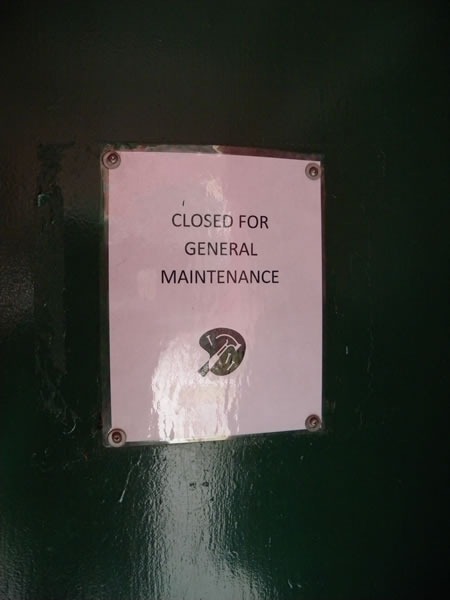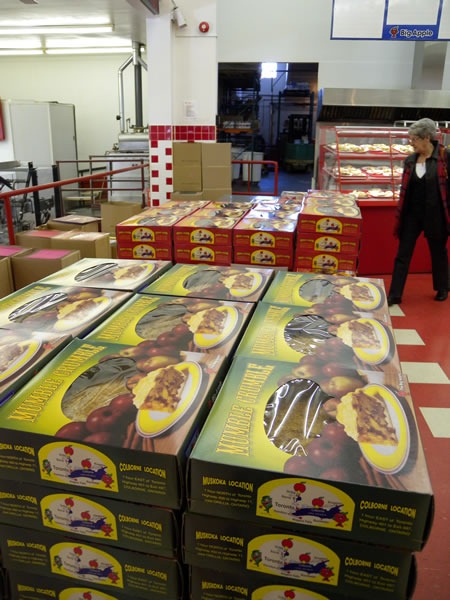
The words “deviant” and “deviance”, which refer to someone or something that departs from the norm, carries such negative baggage that it was necessary to coin the term “positive deviance”. Many social and cultural norms are the result of experience, some of which dates back thousands of years; they’re considered to be “best practices”. However, there are times when deviating from the norm has positive outcomes: when this happens, it’s called positive deviance.
The Tale of the Crab

According to The Power of Positive Deviants, and article in yesterday’s Boston Globe, the story behind the concept of positive deviance is about outliers who thrive (this should immediately bring Malcolm Gladwell to mind). Inspired by Positive Deviance in Child Nutrition, a book written by Tufts University professor Marian Zeitlin, Monique and Jerry Sternin decided its ideas to real-world use.
In the early 1990s, the Sternins worked with Save the Children to combat child malnutrition in rural Vietnam. They noticed that in uniformly poor towns, where most children were showing the signs of not getting enough nutrition, there were children who somehow managed to be well-nourished. The Sternins took note of these “outlier” children and interviewed their families and looked around their homes.
The answer came when Monique Sternin, while interviewing a family with inexplicably healthy children in a house that didn’t even have full walls, noticed a crab crawling out of a basket. She deduced that the children were being fed crab and asked the family. The parents were at first reluctant to admit it, but they eventually confessed: the father of the family admitted that he scavenged for shrimp and crab while working in the rice paddies.
Even though crab and shrimp are rich in protein – a scientist in the Boston Globe article calls them “protein bombs” – there was a social stigma attached to feeding them to your children. It seemed low class (young people might say it was “ghetto”) next to what was the “proper” food: commercial baby food in a jar, which was considerably far more expensive, yet lower in protein. The father of the family was a positive deviant.
The Sternins catalogued a number of positive deviant behaviours and encouraged the people who practiced them to share them with their neighbours. Once the deviant behaviours were adopted, severe malnutrition dropped in the villages in which they were practiced.
The Trick that Became a Best Practice

Jasper Palmer, a patient transporter at Albert Einstein hospital, had no idea that his technique for disposing of hospital gowns and gloves after use would be institutionalized. After he was done wearing a gown and gloves, he would remove the gown (with his gloves still on) and crumple it into a small ball. He would then remove a glove, turning it inside-out as his did so, and then use it as a disposal bag for the gown, handling it with the hand that was still gloved.
To him, it was just a clever trick, but it had an unexpected positive side-effect: it turned out to be a very effective way of minimizing contact with germs. The technique is now referred to as the “Palmer Method” and is standard practice in a number of hospitals.
The Qualities of Positive Deviance
 As I wrote earlier, “deviance” is typically used to an intentional departure from the norms established by a group, organization or culture that has negative results and threatens the well-being and stability of that group, organization or culture. Incivility and theft are considered to be common forms of deviance.
As I wrote earlier, “deviance” is typically used to an intentional departure from the norms established by a group, organization or culture that has negative results and threatens the well-being and stability of that group, organization or culture. Incivility and theft are considered to be common forms of deviance.
Positive deviance is intentional behaviour from norms in beneficial and even honourable ways. It includes those outlying cases of excellence where someone in a group, organization or culture broke free of “the ways things are always done” and came up with something that positively transformed their group, organization or culture.
According to the Ross School of Business at the University of Michigan, a behaviour has to have these three qualities to be considered positive deviance:
- It must be voluntary
- It must depart significantly from the established norms for the group
- The intentions behind the behaviour must be honourable
Other notable qualities of positive deviance are:
- Even though the behaviour is deviant, it’s often just “a little thing” – but it yields a disproportionately large positive effect.
- Positive deviants are often unaware of the benefits of their behaviour. It’s just something that “worked for them”.
- They are often ashamed of or at least reluctant to talk about their behaviour because it violates social norms and might bring about the disapproval of the group.
- Positive deviance seems to come up with solutions for hard problems for which other solutions have been tried and found wanting. This may be because the group has a big incentive to solve the problem – big enough that individuals might try solutions that would be seen as too radical or distasteful.
- One reason positive deviant behaviour endures is because of a sense of ownership. People don’t dismiss their own creations easily.
- Positive deviance develops and then spreads through a “show, don’t tell” approach. The Sternins have a motto: “It’s easier to act your way into a new way thinking than to think your way into a new way of acting.”
Positive Deviance and The Empire
 One of the downsides of working within the Microsoft world, which dominates a number of areas in technology, is that there is a tendency be insular and ignore or discount things that exist outside that world. This insularity was harmless ten years ago, when desktop apps ruled the earth, always-on connectivity was for early adopters and walking down the street while having a conversation on a mobile phone was considered a little weird. Today, in a world where web apps and services are increasingly prevalent and the iPhone is redefining the smartphone experience (smartphones were arena where Windows Mobile was once dominant but complacent), such insularity has the potential to make one a dinosaur among smaller, more agile mammals.
One of the downsides of working within the Microsoft world, which dominates a number of areas in technology, is that there is a tendency be insular and ignore or discount things that exist outside that world. This insularity was harmless ten years ago, when desktop apps ruled the earth, always-on connectivity was for early adopters and walking down the street while having a conversation on a mobile phone was considered a little weird. Today, in a world where web apps and services are increasingly prevalent and the iPhone is redefining the smartphone experience (smartphones were arena where Windows Mobile was once dominant but complacent), such insularity has the potential to make one a dinosaur among smaller, more agile mammals.
I think the Microsoft world could stand a little positive deviance, and I don’t think I’m alone in that belief:
Consider the existence of CodePlex, the Open Source Lab at Microsoft and the OSI-approved Microsoft Public Licence. There was a time when such endeavours – even the idea of such endeavours – would’ve been considered deviant, if not outright anathema, but what started as a set of small independent counter-cultural efforts (at least at Microsoft) has grown into a collection of officially-sanctioned parts of The Empire. I’ve met some of the higher-up folks at the Open Source Lab and they’re quite genuine in their belief in the power of open source and that it and Microsoft are not mutually exclusive. They’ve worked very hard towards the goal of making sure that PHP runs just as well on Windows as it does on Linux, and they’ve spoken at a number of open source conferences. They, like I, believe that Microsoft can benefit from and contribute to open source software and that we should compete against other companies, not styles of developing software.
Another example of positive deviance at Microsoft is ASP.NET MVC. It started as a little idea implemented by Scott Guthrie on an airplane and goes against the mainline Microsoft philosophy that all development should be like desktop app development as well as their “not invented here” syndrome. At every presentation where it’s been demonstrated to .NET developers, there’s always a developer who sees its deviation away from the desktop programming metaphor as a step backwards. If you’re accustomed to the way things are done in ASP.NET, its MVC cousin seems at first glance like a throwback to the days of classic ASP, but having come from the world of Rails, Django and CakePHP, I believe that the power, control and maintainability offered by ASP.NET MVC far outweighs the benefits of ASP.NET’s disguising web programming to appear like desktop programming.
An interesting example of positive deviance from two cultures’ norms was the cooperation between Microsoft and WordPress. I was really surprised to see WordPress founder Matt Mullenweg along with the chief tech of the I Can Has Cheezburger blog empire onstage at PDC, talking about how a number of WordPress-based blogs are running on Azure (one of which is the amusing OddlySpecific.com). Here are guys building an open source blogging platform using an open source programming language, talking about deploying their wares to Microsoft’s cloud platform at Microsoft’s premier developer conference to great applause from Microsoft developers. I can see hard-liners from both cultures frowning upon this, but I also think it’s a positive deviance that will benefit all parties concerned.
My approach to developer evangelism: I already toot my own horn a fair bit on both Canadian Developer Connection and especially Global Nerdy (my personal tech blog), so I’ll keep this short. I am unorthodox in my approach to evangelism, I’ve caught some flak for deviating from “the way things have always been done”, and the Twitter discussion surrounding the incident with the chaps led to a couple of companies signing a half-million dollar development deal.
(Besides, if you ask my co-workers, most of them will say I’m a deviant of some kind.)
Are You a Positive Deviant?

Perhaps you too are a positive deviant. There might be some practice, behaviour or habit that “breaks the rules” in one way or another that is also beneficial. It probably started as an answer to a “what if?” question when you were trying to solve a problem and became part of your routine over time. You probably didn’t even make the conscious choice to adopt that practice, behaviour or habit – as the Sternins like to say, “It’s easier to act your way into a new way thinking than to think your way into a new way of acting.”
The point behind this is to encourage you to not be afraid or fall victim to peer pressure either when trying something that “breaks the rules” or when you see someone doing the same. Give it a second look — if the intent is honourable and the effects are beneficial, you might be witnessing the power of positive deviance.
This article also appears in Canadian Developer Connection.














 Damir at the wheel, looking for an opening on the Don Valley Parkway.
Damir at the wheel, looking for an opening on the Don Valley Parkway.


 As I wrote earlier, “deviance” is typically used to an intentional departure from the norms established by a group, organization or culture that has negative results and threatens the well-being and stability of that group, organization or culture. Incivility and theft are considered to be common forms of deviance.
As I wrote earlier, “deviance” is typically used to an intentional departure from the norms established by a group, organization or culture that has negative results and threatens the well-being and stability of that group, organization or culture. Incivility and theft are considered to be common forms of deviance.



 TechDays Montreal will feature some interesting Quebec twists, one of which is that all the presentations in the developer tracks – that’s Developing for the Microsoft-Based Platform and Developer Fundamentals and Best Practices – will be done in French. If you’re an Anglophone, worry not: there will be a translation service to help you out. We’re happy to be able to do our presentations in our freres’ and souers’ mother tongue.
TechDays Montreal will feature some interesting Quebec twists, one of which is that all the presentations in the developer tracks – that’s Developing for the Microsoft-Based Platform and Developer Fundamentals and Best Practices – will be done in French. If you’re an Anglophone, worry not: there will be a translation service to help you out. We’re happy to be able to do our presentations in our freres’ and souers’ mother tongue.
